|
|
 Jen Jen |
 |
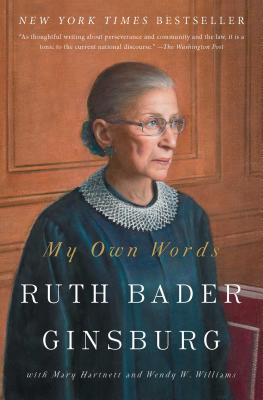
|
|
Little
Edward Carey
Little is historical fiction set in the second half of the 18th century in France. It follows the life of Marie, also known as “Little” because of her small size. I’ll warn you that the first chapter of this book is a bit gruesome—it describes how Marie becomes an orphan, which, as you might guess, involves death. Keep reading. I promise the gruesome scene in the first chapter of the book is the most explicit. So, after chapter one, Marie ends up being taken in by Dr. Curtius, a peculiar man who is an anatomist and a wax sculptor. Marie becomes his apprentice. Inevitably, Curtius falls in love with a horrible woman, the Widow, who has a son. As you might expect, this cobbled-together family converts a monkey house into a wax museum. Ok, maybe you didn’t expect that. In addition to the peculiar lives of Marie, Curtius, and now the Widow and her son, it is a very tumultuous time in France’s history. At one point, Marie is called to Versailles and works with Marie Antoinette. If this all seems a little over the top, it is in fact a historical novel about Madame Tussaud. In addition to being a great writer, author Edward Carey is an artist. Throughout the book are mostly small, quirky, fun illustrations. I found this to be a very satisfying, thorough novel and I think a book group could have a great discussion of it.
|
| |
|
 |
|
The Poppy Wife
Caroline Scott
The Poppy Wife is historical fiction set in 1917-1921, the middle of World War I through post-World War I, or as it was known at the time, The Great War. Before the war, Edie married Francis Blythe. Francis was sent to war, along with his brothers Will and Harry—all three serving in the same platoon. Will was killed in action. Later, Harry saw Francis seriously wounded and believed the wound to be fatal. In the chaos of fighting, Harry and Francis were separated when Francis was taken to a medical station. Edie received a letter from the brothers’ commander that her husband Francis was missing and believed dead. Four years later, Edie receives an envelope containing one thing: a photograph of Francis. There is no explanation or return address, the postmark is the only clue. By this time, the war was over and Harry was working as a photographer in Europe. He fulfilled requests of families of dead soldiers who wish to have a photograph of their loved one’s grave, if possible, or his last known location. In an effort to find out if Francis could possibly still be alive, Edie accompanied Harry. Whether or not Francis is still alive is the mystery threaded throughout the novel, but there’s much that could be discussed in this novel—first and foremost, soldiers’ families having no access to information. There’s also a fair amount dealing with the PTSD, then known as shell shock, suffered by soldiers. On one of Francis’s leaves, his wife Edie feels like the man she married has been replaced by someone else. But Francis is not the only one who has suffered great mental stress. While it’s unlikely that anyone in your book group has a living relative who is a veteran of World War I, probably every member of your book group has a living relative who is a veteran of some war.
|
| |
|
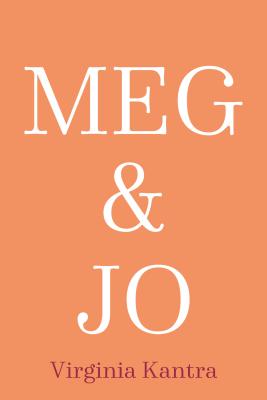 |
|
Meg & Jo
Virginia Kantra
This is a modern re-telling of Little Women. The sister’s names are the same as those from Little Women—Meg, Jo, Beth, and Amy. They keep in touch much the same way you probably do with your family – texting and phone calls. For the most part, this version is pretty faithful to the original, but translated, if you will, into the present day. For example, instead of Amy burning Jo’s manuscript, as she does in Little Women, Amy deletes Jo’s computer files in Meg & Jo. Meg has married John, Mr. Brooke, and they’ve had twins. Meg is the ultimate mother. Her husband John has given up teaching and coaching to work at a car dealership. Jo has moved to New York City and is working part time as a prep cook at a restaurant while writing a blog called Hungry. Jo’s boss at the restaurant is the famous chef, Eric Bhaer. He’s older than Jo, divorced, and has teenage sons, but Jo falls for him hard. Beth is an aspiring singer/songwriter. Amy is living in Paris, France, working in the fashion industry. As the title of the book hints, the book is dominated by the older sisters, Meg and Jo. The narration alternates between the two. Meg & Jo does not completely retell Little Women—I suspect the rest of the retelling will happen in a follow-up to this book, Beth & Amy. On its own, Meg and Jo is a fun, light-hearted read. It’s not necessary to have read Little Women to enjoy it. For those who are familiar with Little Women, comparing this book with Alcott’s original would provide a lot of fodder for book group discussion.
|
| |
|
 |
|
Invented Lives
Andrea Goldsmith
This novel is set in the 1980s. It begins with Galina, a Soviet Jew living in Leningrad, who emigrates to Australia after the death of her parents. Once Galina leaves Leningrad, she is forbidden to ever return. When she arrives in Australia, she is faced with the usual struggles of an immigrant. She is befriended by Slyvie and Leonard Morrow, as well as the Morrow’s adult son, Andrew. Andrew is a mosaicist, which is a beautiful metaphor for the book. It also explains the cover. Where and how we do all fit? How close must we be with blood relatives? What are our boundaries? At one point, one of Galina’s uncles crashes into her life—insisting on not only staying with her, but having Galina wait on him. The thing I like best about this book is this – how often do you read a book, enjoy the characters, but feel like more could have been explored of the characters? You won’t get that feeling in this book. Every crack and crevice of the major characters is explored—not in a tiresome way, but in a way that feels quite satisfying, as though you completely understand each character. I also enjoyed viewing ‘80s politics from the other side of the planet. Remember that the ‘80s were dominated by Gorbachev and the fear of AIDS. This book is very much focused on characters and voice, rather than plot. I would love to discuss this book with someone young enough to not remember the 1980s.
|
| |
|
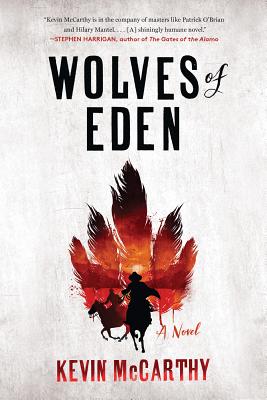
|
|
The Wolves of Eden
Kevin McCarthy
This is historical fiction set in Montana is the 1860s. Civil war time, yes, but more specifically, this novel centers around Red Cloud’s War. Two narratives, which eventually come together, are told in The Wolves of Eden. One is that of Irish immigrant brothers Thomas and Michael O’Driscoll, who came to America to fight in the Civil War and earn money. Their plan is to take their wages from their time in the army to start a new life. However, they run through their money and decide to re-enlist in order to avoid starvation. At one time, Thomas was an incredibly handsome, and much sought-after man. A war wound has left him disfigured and his speech compromised. His brother Michael seems to be the only one who can understand Thomas’s speech. The other narrative is that of Lieutenant Martin Molloy and his team, who have been sent to a fort in Montana to investigate a triple homicide. There are so many things to talk about in this book—war, family, prostitution, Native Americans, immigrants, the hierarchy and politics of the military, and of course, a good ol’ mystery. This has been one of my favorite reads of 2020.
On March 17th, our men’s group is going to meet with author Kevin McCarthy, who will skype in from Ireland, followed by a discussion of The Wolves of Eden.
|
| |
|
|
|
|
|
 Sally Sally |
|
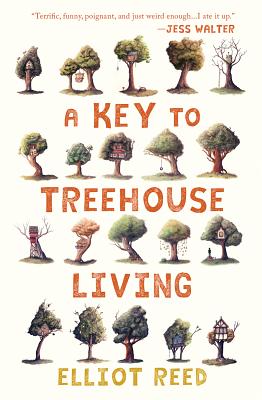
|
 |
A Key to Treehouse Living
Elliot Reed
At first glance, what’s notable about this novel is the structure. It’s a glossary-style list. The entries are more or less alphabetical, starting with Absence and ending with Yonder, the Wild Blue. The entries range from a paragraph to a page or two in length and as we read them, we piece together the life of William Tyce.
William has been abandoned by his parents and what happened to them becomes clear only at the end of the book. He’s taken in, after a fashion, by his uncle, who provides little more than a roof over William’s head, and certainly no parenting. The uncle, as we eventually learn, has problems of his own.
William puts together the glossary-style entries as a key to understanding his life. William is somewhat strange. He’s also funny without meaning to be. Here’s part of the entry under the title “Campfire:” “Build a campfire outside, never in. It may be cold in the treehouse, and you may build a fire in there to stay warm, but believe me, you will regret it.”
We only see William through the key entries. The book isn’t a diary, and he does not provide direct information about his interior life. The beginning of the book gives information, but little plot. A bit of a plot emerges later, along with a sense of urgency and the reader’s concern for William will grow.
This unusual book will be great for discussion on two levels. You’ll want to talk about William and his life, but you’ll also want to talk about the structure of the book. Let us know what you think about both of them!
|
| |
|
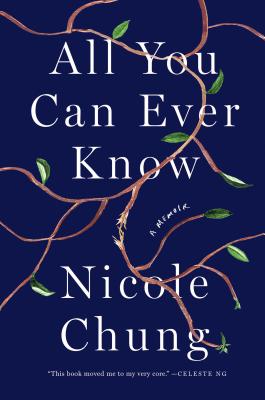 |
|
All You Can Ever Know
Nicole Chung
You probably know someone who was adopted, or who adopted a child. You may even have been adopted, or have given up a child for adoption. Adoption is familiar to us. Yet for many of us, the struggles of people who have been adopted remain hidden. Many adoptees are given a small amount of information about their biological parents and told, “This is all you can ever know about them.”
That’s the title of the book written by Nicole Chung , an adoptee who wanted to know more. From her earliest childhood, her adoptive parents told her the story of her loving and selfless biological parents. Nicole was a sickly baby, and the doctors told her parents she would struggle all her life. Her biological parents, emigrants to the United States from Korea, felt they couldn’t give her the life she deserved, so they gave her up for adoption.
Chung’s adoptive parents lived in an all white community and, as she grew older, she always had a sense of being an outsider, different from everyone around her. Beginning in elementary school, she was exposed to racism. Her parents had no idea this was happening and Nicole never said a word about it at home. And, although she lived in a loving home and has strong and positive relationships with her adoptive parents, she was filled with questions
How could my biological parents have given me up?
Why didn’t they ask for help so they could keep me?
Who are they?
Would my adoptive parents have adopted me if they could have conceived children?
When Chung became a mother herself, her questions intensified. She grappled with issues of identify and the meaning of family.
It’s not a spoiler to say that the book is dedicated to Nicole’s biological sister, and that she eventually discovered not only one sister but two, as well as her biological parents.
The book is personal, but also universal. Who am I? and How do I find my place in the world? are questions each of us have dealt with.
The book is not a difficult read, and interest in Chung and her life quickly pull the reader along.
Bob and I adopted a son, and I had to ask myself if this was the reason for my interest in this. Initially, it may have been, but the themes of the book are so universal that I’m confident recommending it to people who haven’t been adopted. I hope you’ll give it a try.
|
| |
|
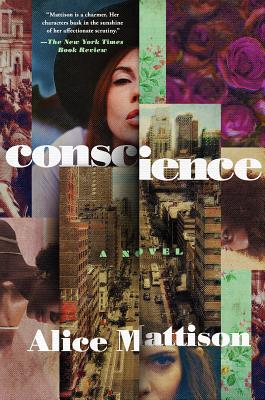 |
|
Conscience
Alice Mattison
Conscience is, I think, the meatiest of the novels which I read for Night In.
A lot goes on in the book, which makes a plot summary difficult.
The book takes place in the Viet Nam era and the recent past, and has three first person narrators. Olive, a writer and editor who is Caucasian, and Griff, an educator who is African-American, have had a long marriage, rocky at times. They met when both were active in protesting the Viet Nam war. A childhood friend of Olive’s, named Helen, was also a protestor, and she turned to violence. Another friend, Val, years ago wrote a fictionalized account of Helen’s life. As Conscience opens, Olive has been asked to write an essay about Val’s book.
Suddenly, memories of the past are back in the forefront of Olive and Griff’s lives. A new friend of Olive’s who works with Griff on the board of a non-profit has an important part in the latter part of the book. Her name is Jean and she is the third narrator of the book.
The characters are complex, and they grapple with a variety of issues, all connected to the ways in which we make a difference in the world.
This book is for individuals or groups who want to read a compelling story which raises many points for discussion.
Full disclosure: I was in my teens and twenties during the Viet Nam era, and it deeply marked my life. I think the book has wider appeal than just to people who came of age in the 1960s and 70s, but I’d be interested in hearing your reaction after reading the book.
|
| |
|
 |
|
Laurentian Divide
Sarah Stonich
Here in Minnesota, we’re fortunate to have a number of fine small publishers. One of our favorites is the University of Minnesota Press. In addition to academic titles, they publish books of general interest. Many of these books can be found in our regional section, and a number of their authors have visited the store.
One of these is Sarah Stonich, whose work is familiar to many of you. Sarah wrote These Granite Islands and Vacationland. Vacationland is the first book in her Northern Trilogy and Laurentian Divide is the second. These two books are novels in stories. Each chapter focuses on a different character, and many characters appear repeatedly throughout the book.
You’ll recognize the setting for Vacationland and Laurentian Divide—it’s an imaginary area just a little north of us.
As Laurentian Divide opens it’s May, but the residents of Hatchet Inlet are still grieving the deaths of two young women in a car accident the previous fall. Just now, though, they’re beginning to wonder about Rauri Paar. He lives on a remote island a distance from town. He holes up there each winter, but generally has reappeared by now. Is he all right? Is he alive—or not?
I don’t want to say more about what happens in the book, but I do want to say the diverse residents of Hatchet Inlet come vividly to life in Sarah’s book. Some characters in Laurentian Divide are new, others you’ll greet as old friends from Vacationland. Sarah’s writing is beautiful. She’s generous to her characters, and quietly humorous.
I don’t think you have to read Vacationland first, but doing so will enrich your reading of Laurentian Divide.
One of our book groups discussed Vacationland last summer, and I can tell you they had a great—and lively discussion.
|
| |
|
 |
|
When Death Becomes Life
Joshua Mezrich
This non-fiction book weaves together both memoir and history. The author is a transplant surgeon at the University of Wisconsin School of Medicine and Public Health. He shares his own very long journey to become a transplant surgeon, and juxtaposes it with the fascinating history of the field of organ transplantation, and how death becomes life through the transplantation of organs. Much of this history has taken place within our lifetimes, which is amazing.
In many cases, the medical people responsible for breakthroughs were maverick surgeons with imagination and vision. The narrative comes close to home, because the University of Minnesota Medical School played a large part in advances in transplantation.
I found the historical parts of the book to be more compelling than the memoir parts. And yet, I appreciated Mezrich’s concern for his patients—which includes organ donors, organ recipients, and the families of each.
He also spends time on the ethical issues involved in his work. In the chapter called Lisa and Herb, he wrestles with the issue of whether or not liver transplants should be done for alcoholics. The chapter titled Nate presents the Selection Meeting, and discusses the process of deciding who will get an organ and why.
I don’t think it’s necessary to have a medical background to read and appreciate this book. At the same time, it’s not for everyone, but it reading it will be a rewarding experience for the right readers. |
| |
|
|
|
|
|

Bob |
|
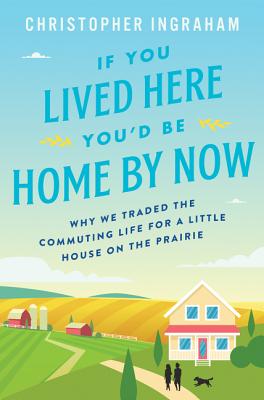
|
|
If You Lived Here You’d Be Home Now
Chis Ingraham
OK here I am, wandering farther from Sci-Fi and I find myself in the middle of Non-Fiction. It’s not like I fell off the bookshelf and landed in Documentaries, but I did like the title and chose to stay (for one book, anyway.)
This book is about a writer who doesn’t do the warm and fuzzy kinds of articles. No, his thing is numbers. So on average, he’s a statistical writer who finds some numerical study done somewhere and writes something about it. One government study he wrote about took all the counties in the United States and ranked them best to worst, based on a few criteria like topographical variation, January temperature, (yeah you see it coming) and so on. Well it turns out the bottom of list belonged to Red Lake County, Minn. And when the locals found out they weren’t too happy. But in true Minnesotan style, they invited Chris to come out and see their part of the world. Now you need to know that Chris, his wife Briana, and their two young boys lived in a cramped and too expensive apartment in Baltimore, a two hour commute to his job in Washington DC. Chris wants to do a story on this place and is thinking about taking the locals up on their offer. Briana is convinced he’s going to get lynched. He goes and strangely (surprise, surprise) likes it there…to the point that they relocate to Red Lake Falls, MN!
It’s a fun, easy read as Chris and Briana struggle with the pluses and minuses of a total change in lifestyle.
|
| |
|
|
|
|
|

Gail |
|
 |
|
|
| |
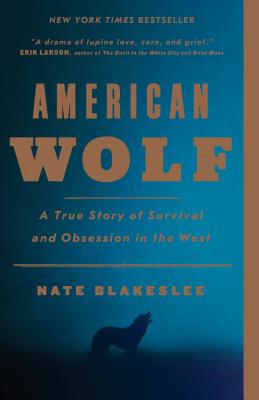
|
|
American Wolf: A True Story of Survival and Obsession in the West
Nate Blakeslee
I picked up this book to read for a nonfiction book club I attend here in AZ. I thought I'd just skim through, but as it turned out, this was a fascinating story. The author doesn't take sides in the wolf controversy but gives us both perspectives. He concentrates on the wolf packs in Yellowstone and in particular #0-6, the alpha female in the Lamar Canyon pack. She faces challenges from hunters, ranchers, politicians, and other wolves fighting for control of the Lamar Valley. The stories of how wolves form packs and relate to each other is so informative and interesting. Wolf watching has become an important part of the Yellowstone experience. |
| |
|

|
|
America for Beginners
Leah Franqui
Widow Pival Sengupta from Koekata, India books a trip with the 1st Class USA Destination Tour Company. Actually, she's not really planning to sightsee. Her mission is to find her estranged son, Rahil, who is in California. There had been a phone call stating he had died suddenly. Satya, the guide, is conducting his first tour and Rebecca is hired as Pival's companion. As this unlikely trio travel America, they discover things are different than described in the guidebooks, and they also discover much about themselves. This the author’s first book. I look forward to another. |
| |
|

|
|
Never Coming Back
Alison McGhee
When Clara Winter's boyfriend breaks up with her, Clara's fiercely independent mother, Tamar, arranges for Clara to go to college in another state. Ten years later Clara is a successful writer. She receives a call to come home as her mother has early on- set Alzheimer's and arrangements need to be made for Tamar to go into a home. As Tamar becomes lost in her own world, Clara has many questions about happenings in her youth. With the help of friends, she begins to find the answers and realizes why Tamar made the decisions that she did. Clara can now look forward to the future. A very well written book from a prize-winning author.
|
| |
|
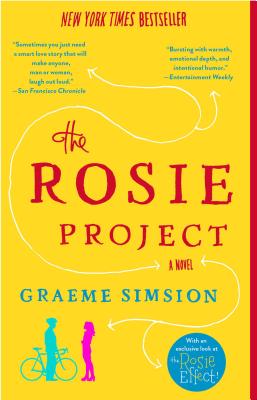
|
|
The Rosie Project
Graeme Simpson
This book has been on my "to read" stack for quite some time. It was worth the wait. Professor Tilman is looking for a wife and decides to send out a 16-page questionnaire called the Wife Project to weed out any undesirables. When he meets Rosie, he disqualifies her immediately as not what he's looking for. He does decide to help her find her biological father (the father project.) Much to the professor's surprise, he finds that perhaps you don't find love but it finds you. Set in Australia, this is a fun book and has also been made into a movie. Here’s the trailer. |
| |
|
|
|
|
|
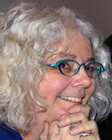
Hannah |
|
 |
|
|
|
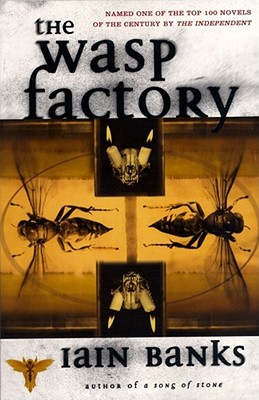
|
|
The Wasp Factory
Iain Banks
You are in the mind of Frank as he checks his sacrificial poles (small animals are the sacrifices) guarding a small island off the coast of Scotland. Frank’s father has a dark sense of humor, or is it his way of maintaining power? The two live alone but venture into town, especially now that they are looking for brother Eric to turn up; he’s escaped from the “looney bin.” The wasp factory’s product is prophesy: the workers, the wasps, all die and end up on an altar. Frank seems to be a sociopath, but perhaps it’s more complicated? This book is not for everyone. The blurbs on the back of the book range from “masterpiece” to “rubbish.” The Independent named The Wasp Factory one of the top 100 novels of the century. My favorite blurb is from the Daily Express: “Read it if you dare.” I’m glad I did: I love it. |
| |
|
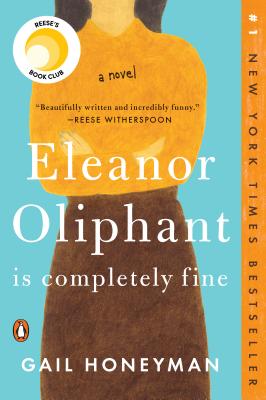
|
|
Eleanor Oliphant Is Completely Fine
Gail Honeyman
So similar to The Wasp Factory but so different! Being in the mind of Eleanor Oliphant is another case of experiencing what it’s like to have been permanently damaged as a child, physically and emotionally. We’re still in Scotland, but now it’s Glasgow, and the narrator is a woman who seems to be on the autism scale. But the biggest difference is the tone of the book: Eleanor Oliphant is extremely funny, with moments that give you hope for a happy ending. Reese Witherspoon is talking about turning this into a movie. I can definitely see it.
|
| |
|
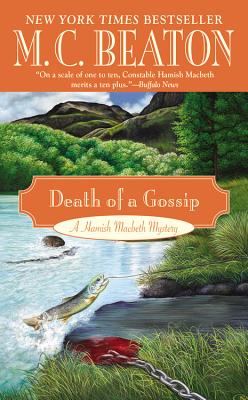
|
|
Death of a Gossip
M.C. Beaton
Hamish Macbeth is a laid-back, quirky, charming cop in a tiny village in northern Scotland. He pines for the local aristocrat’s daughter, and she’s fond of him. But he isn’t a suitable match! The Hamish Macbeth series are light-hearted reads with plenty of Scottish atmosphere if little serious literary value. They’re just a lot of fun. |
| |
|
|
|
|
|
| |
|
|
|
|

Tim
|
|
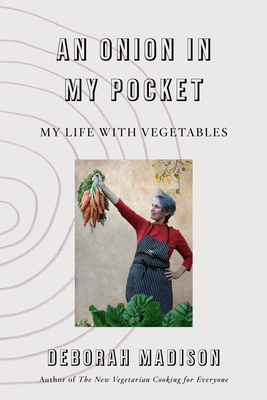
|
|
An Onion In My Pocket
Deborah Madison
Deb Madison is arguably one of the most prolific authors of cookbooks, specifically on Vegetarian Cooking, without being dogmatic. This book is the missing component in the long list of her works. It's a memoir expanding on her background, her motivations, and interesting 'accidents' that have made her who she is.
In the mid-late 1970's I was working as a catering chef in San Francisco. Friends I was working with had strong ties to the Zen Center, where Madison was the head chef at Tassajara, the Zen Center's Monastery. Green Gulch was an organic farm being developed that, it was hoped, would supply local, sustainably produced food for the Zen Center and its satellites. I remember the excited anticipation leading up to the opening of Greens, the Zen Center's restaurant at Fort Mason. It was hoped that Greens would be a source of revenue, as well as a point of contact with the Bay Area Community. It was, and is, wildly successful. Deb Madison was in charge of opening and supervising the Greens kitchen. My fellow chef and I made a point of going to lunch there the week it opened. I wish I could convey to you the sense of funky, radical newness surrounding all things food and wine at that time. I was approaching 30 years old, invincible, and perfectly aware that it was, in many respects, a high point. This book brought all that back, and so much more.
To absent friends: I miss you no less.
Note: the book will be released May 5,
and may be pre-ordered at our online store.
|
| |
|
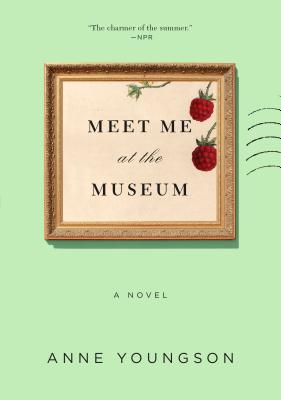
|
|
Meet Me at the Museum
Anne Youngson
Park Rapids, Minnesota
Wed. 19 February 2020 / bitterly cold and windy
Dear Lynn,
I've just read a book I thought you might enjoy. NO, on reflection I'm sure you would enjoy it! Meet Me at The Museum, by Anne Youngson, is a book whose story is told through letters exchanged between Tina Hopgood, a farm wife in East Anglia, England, and Kristian Larson, Curator of the Silkeborg Museum, Denmark. The Museum in Silkeborg, has in its collection the Tolland Man. You may have seen photos of him in National Geographic. It’s the body of a man who was buried in the bogs of Denmark, something like 2,000 years ago. As Tina and Kristian's correspondence develops, it assumes the most personal character that, I will argue, is only possible through letters. They both confide personal anxieties about relationships, loss/grief, children, missed opportunities, age, and most importantly, the possibility to change. All of these discussions and confidences are set against the backdrop and influence of the seeming changelessness of the 2,000 year old The Tolland Man. Who is he, what does he mean? Who are we, and what do we mean? Aside from all the food for thought in this book, I very much enjoyed the skill of the letters in expressing thoughts and questions about what is fundamental in life, and the consequence of ignoring making the attempt to answer them for ourselves. Thinking of you often Tim
|
| |
|
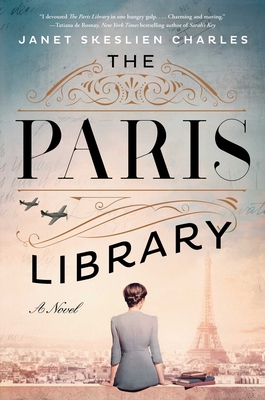
|
|
The Paris Library
Janet Skesline Charles
Lily is a teenager living in a small town in rural Montana. She's pretty much like any kid her age, with the possible exception of a serious interest in learning French. She discovers her reclusive mysterious neighbor, an elderly woman, speaks French, and has a history that Lily slowly uncovers. Odile Souchet, the neighbor, as a young woman worked at the American Library in Paris, before and during the German occupation. Both of these women become involved in each other's lives, and from their different perspectives of age and experience, help one another overcome emotional trauma resulting from events and personal choices they've made. Additionally, there's a good dose of history about The American Library in Paris, which frankly I knew nothing about. If that weren't enough, the story mentions dozens of books, some of which you may have read, but many that provide a future reading list to treasure.
Note: the book will be released June 2,
and may be pre-ordered at our online store.
|
| |
|
|
|
|
|
Would you like to be a guest reviewer?
Email Sally at sally@beagleandwolf.com |
| |
|
|
|
|
|
— page top —
|
|

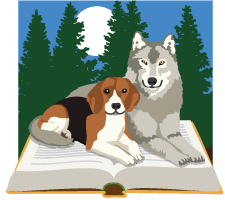

 Jen
Jen




 Sally
Sally



















